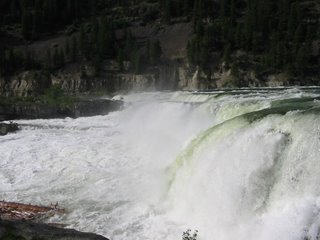The Electoral College...And The New York Times
According to the New York Times, the major political parties are trying to divide up the electoral votes in a new and exciting way. The votes will be apportioned by the congressional district, not based on who wins the majority vote of the state. And, many Democrats believe the Republicans started it.
When state Democratic leaders from around the country meet this weekend in Vermont, the California chairman, Art Torres, expects to be peppered with the sort of questions that have been clogging his in-box for weeks.It is interesting to note that, while the Republicans are doing this in California, the Democrats tabled their own attempt at it earlier this summer.
What is this about Republicans trying to change the way Electoral College votes are allocated in California? Is there a countereffort by Democrats in the works? What does it mean for presidential candidates?
In the North Carolina legislature, Democrats nearly signed off on a similar measure this summer, until the national party chairman, Howard Dean, stepped in to get the issue tabled for the session.The issue comes down to what decides who gets the electoral votes to be president. And, at least according to the NYT, the Republicans are the real bad guys.
The Electoral College system has always been an indirect system for selecting the President. The idea being, as expressed by several founding fathers, was that popular rule (selection by the popular vote) would not serve the best interests of the country.
They also questioned how the average citizen in one part of the country would know much about a candidate from another part. So they created the "Electoral College" to cast the official, determining votes. These electors are supposedly "eminent men" [keeping in mind that women did not vote until the 1920s], educated and well-informed community leaders.The idea was that these eminent leaders would gather and debate with possible outcome being changed votes and outcomes. It was not, originally, a winner take all system in the States based on the popular vote of the voters, as it is today. Electors were to be chosen by each state. How they were chosen was left to the States. However, the electors would then cast their votes. But, as originally designed, the system would really only work without political parties and without national campaigns. And, that only lasted through four elections. A couple of key points about that system were:
(1) Each State's Electors were required to meet in their respective States rather than all together in one great meeting. This arrangement, it was thought, would prevent bribery, corruption, secret dealing, and foreign influence.Once again, it shows the system was not supposed to be an all-or-nothing system of election.
(2) In order to prevent Electors from voting only for a "favorite son" of their own State, each Elector was required to cast two votes for president, at least one of which had to be for someone outside their home State. The idea, presumably, was that the winner would likely be everyone's second favorite choice.
(3) The person with the most electoral votes, provided that it was an absolute majority (at least one over half of the total), became president. Whoever obtained the next greatest number of electoral votes became vice president - an office which they seem to have invented for the occasion since it had not been mentioned previously in the Constitutional Convention.
The 12th amendment changed that system to the casting of a single vote for President and another single vote for Vice-President. It also stipulated that, in cases of ties, the House of Representatives will choose the President and the Senate the Vice president. That amendment did not change any other aspects of the Electoral College. What it accomplished, though, was the solidification of the two party system.
At issue today is the choosing and importance of the electors. Little is done by them that is not already rubber stamped. Which brings up the principle current problem of the system: Should more populous areas have total control of presidential election system? That is what is going on in California and North Carolina, and other states as well. Many feel the Electoral College system is outdated and no longer belongs. I would argue that, as originally designed—with some modifications for the party systems we have in our country—the system is still valid and necessary. I see the efforts to divide up the States electoral votes by districts, and the predominant vote therein, as a return to that system. I also recognize there are problems. Gerrymandering of districts, for example, by both sides is one major roadblock to this type of system.
I invite any reader to weigh in with their comments. Please feel free to cite references if you have them. And, try to be civil. I reserve the right to delete comments if they get too wild and ugly.




|